(1) BAFTA TV AWARDS. The genre cupboard was practically bare when the winners of the BAFTA TV Awards 2023 were revealed tonight. “Memorable Moment” — the only publicly-voted category – proved the exception, won by “’Platinum Jubilee – Party at the Palace’ – Paddington meets Queen Elizabeth II”.
…Ben Whishaw was a part of Queen Elizabeth II’s Paddington Bear skit – as the voice of Paddington – which won an 2023 BAFTA TV award for most memorable moment, the only prize voted on by the public. The skit beat out Nick and Charlie’s first kiss in “Heartstopper” and the “Running Up That Hill” moment in “Stranger Things,” among other nominees…
(2) CRUISING. [Item by Cora Buhlert.] I took my Masters of the Universe figures out into the garden and posted another photo story: “Masters-of-the-Universe-Piece Theatre: ‘Adam’s Day Out’”.
“I just love getting out of the palace and enjoying the peace and quiet of the Eternian wilderness in springtime. And the Road Ripper really packs a punch. Too bad it’s only a one-seater, so I can’t take Cringer along. Or Teela…”
“Still, nothing beats racing across the plains of Eternia. No Prince Adam, no royal duties, no He-Man, just me and the unspoiled wilderness and… – Oh, raptor crossing!”
SCREECH!

(3) EUROVISION BOOK CONTEST. [Item by Cora Buhlert.] The finalists for the Eurovision Book Contest (like the Eurovision Song Contest, only with books) have been announced and there is at least one genre finalist, the German entry The Perfume by Patrick Süsskind, which won the 1987 World Fantasy Award: “Elena Ferrante and Marian Keyes among authors competing in Eurovision book contest” in the Guardian.
In March, the literary festival asked the public to submit their favourite fiction from any of the 37 countries that take part in the music competition each year. Suggestions could be of any genre and language but they had to have been published in the years since Eurovision began in 1956.
The final selection of one book from each country was chosen by an expert panel, who were aiming to come up with “an ambitious reading list” of books that will “inspire, examine and entertain”.
This also illustrates IMO the issue with that contest. The Perfume was released in 1985, i.e. it’s almost forty years old. The Irish contestant Rachel’s Holiday by Marian Keyes came out in 1998. That Georgian contestant is a novel written in German by a Georgian expat. Two finalists are graphic novels. The selection is just weird.
(4) A CROWNING ACHIEVEMENT. Connie Willis shared her delight in Charles’ coronation with Facebook readers.
“What is the finest sight in the world? A Coronation. What do people talk most about? A Coronation. What is delightful to have passed? A Coronation.” — Horace Walpole
Saturday I got up early to watch Charles III’s coronation. It was the second one I’d seen. The first was Elizabeth II’s which I watched seventy years ago on someone else’s TV because we didn’t own one yet. It was an impossibly grainy image on a tiny screen of a Cinderella-looking carriage drawn by four horses. I was only seven years old, but I have a vivid memory of it, probably because I was so fascinated by fairy tales and princesses and queens and golden coaches made out of pumpkins.
This time my husband and I watched it in color on a much larger screen while talking on the phone to our daughter in California the whole time as she kept us updated with texts from her friends and comments on Tumblr. Now, seventy years later, I am no longer all that fascinated by princess and carriages, but I am fascinated by history, and in terms of historical events, a coronation simply can’t be beat….
(5) ROBOTIC ROBBERY. Lincoln Michel knows “The Endgame for A.I. Is Clear: Rip Off Everyone”.
…But let’s talk about the more specific ways companies plan to rip off writers with “A.I.” as the excuse.
A strong hint can be found in the current Writers Guild of America strike. A key sticking point is the use of A.I. writing. The writers aren’t asking for Hollywood to ban the use of A.I., rather they are asking that A.I writing not count as “literary material” or “source material.” This is technical Hollywood language related to the realities of how contracts work and how much money writers get. With the hard realities of capitalism and how corporations look to rip off writers.
The concern isn’t that ChatGPT can replace writers, but that studios will get chatbots to produce a crappy script then hire a writer at a lower rate to fix up the script into something usable. Fixing up a mess of ChatGPT vomit could take more work than writing a script from scratch, but cost the corporation less money.
I think this fear is completely justified and one that writers everywhere should take note of. Will websites and magazines start hiring writers or editors to “fix” chatbot outputs for less pay and no credit? Will book publishers decide they can feed an idea into ChatGPT then hire a novelist as a ghostwriter to rewrite it?
Again, the chatbots don’t have to produce good or even usable writing for this to be a threat. The threat is A.I being an excuse to rip off writers. If you hire a screenwriter to rewrite a chatbot script, you can pay them less. If you hire an author to rewrite a chatbot draft, you can avoid royalties. Etc ….
(6) FOUNDATION. GeekTyrant walks viewers through a “Thrilling New Trailer for Apple Adaptation of Isaac Asimov’s FOUNDATION Season 2”.
…Season 2 is set more than a century after the finale of the first season, “tension mounts throughout the galaxy in Foundation season two. As the Cleons unravel, a vengeful queen plots to destroy Empire from within. Hari, Gaal, and Salvor discover a colony of Mentalics with psionic abilities that threaten to alter psychohistory itself. The Foundation has entered its religious phase, promulgating the Church of Seldon throughout the Outer Reach and inciting the Second Crisis: war with Empire. Foundation chronicles the stories of four crucial individuals transcending space and time as they overcome deadly crises, shifting loyalties, and complicated relationships that will ultimately determine the fate of humanity.”…
(7) TAKING CARE OF BUSINESS AND WORKING OVERTIME. New Amazing Stories editor Lloyd Penney has been interviewed by Angelique Fawns for The Horror Tree, a website for horror writers and markets.
AF: What personal projects are you working on? What do you do in your spare time?
LP: Spare time? What is this ‘spare time’ you speak of? These days, I go into a publications office in Toronto’s east end twice a week to do the proofreader/copyeditor thing for one print magazine and two e-magazines. Then, I am the occasional editor for a British author’s long-time series of books, D.J. Holmes and his Empire Rising series of space adventures. And, for the past 40 years, I have been a regular correspondent and writer in the Letters Column for a long series of fannish publications, fanzines. I try my best to juggle all of this, and I hope not to drop anything. I have been an editor/copyeditor/proofreader for most of my working life, and I have always been an SF reader, so this is the first time I’ve been able to combine the two, and I have tried my best to run with it. I was told it should be fun, and it has been.
(8) PRO TIP. “Tim Dowling: my wife is gardening. I’m in my shed writing. It’s a risky situation”. The author is quoted in the Guardian saying —
“A long time ago I read a quotation in a book of advice, which held that the hardest thing about being a writer is convincing your spouse that looking out of the window is part of your job. I have never been able to track down the exact wording or the author of that quotation; when I look online the only source I can find for it is me, because I cite it so regularly. This is perhaps fitting, since my wife thinks I made it up.”
(9) ONE SUMMER TO A CUSTOMER. Jonathan Clarke investigates “Rod Serling’s Enduring Appeal” for City Journal.
…You might have guessed by now that in “Walking Distance,” Serling was telling his own story. He was 35 when the episode appeared, and he had come a long way from a charmed boyhood in Binghamton, New York. Like Martin Sloan, he had good reason to be tired, and good reason, despite his considerable success, to want to go home again. As his success grew, that desire would grow stronger, too.
It’s easy to forget now that television was once regarded as a creative nullity, good only for selling product. In the medium’s early decades, the programming was mostly quiz shows, Westerns, and police procedurals. Corporate sponsors had considerable creative control, and in tone and style, the industry was not unlike Madison Avenue, slick and a bit shameless. At the same time, because the medium was so new, conventions hadn’t yet hardened, and barriers to entry were lower, especially for writers. Serling, with his early work for two important live series, Kraft Television Theatre and Playhouse 90, became one of a handful of creators pushing television forward. Even so, he accepted that it was a second-rate form, inherently inferior to theater and film. Interviewed by Mike Wallace in 1959, shortly before The Twilight Zone debuted, Serling argued that he was writing “serious, adult” scripts, but he didn’t claim the privileges of an artist. “I’m a dramatist for television,” he said, by way of apology. “This is the medium I know.”
By then, Serling was the most recognizable writer in the country. The face he showed to the public was an appealing one, and very much an American face—principled but modest, industrious, courageous. Beneath that there was a different man: vain, self-indulgent, needy. And underneath that there was a sensitive artist, and a traumatized war veteran, and a young man who lost his father too early. The inmost Serling was perhaps ever that eager boy in Binghamton, standing on his tiptoes to be seen. (As an adult, he stood just 5’5”.) As a writer, he sought to integrate these different selves, to find the sense of coherence that evaded him in life. He would never quite feel that he had done so….
(10) GERALD ROSE (1935-2023). Illustrator and teacher Gerald Rose died May 5 at the age of 87 reports the Guardian. He was the youngest winner of the Kate Greenaway medal for children’s book illustration, in 1960.
…As well as the books with [his wife] Elizabeth, Gerald illustrated the work of many other authors, including Ted Hughes’s Nessie the Mannerless Monster (1964), James Joyce’s The Cat and the Devil (1965), Paul Jennings’ The Hopping Basket (1965) and The Great Jelly of London (1967), Lewis Carroll’s Jabberwocky and Other Poems (1968) and a number of Norman Hunter’s Professor Branestawm titles (1981-83). His own later picturebooks included the award-winning Ahhh! Said Stork (1986) and The Tiger Skin Rug (2011)….
(11) LAST FAREWELL. “RIP John Mansfield”, Kevin Standlee’s tribute to our friend, includes a link to the video of the service.
As most of you who follow me may know, John Mansfield, chair of the 1994 Winnipeg Worldcon and an important figure in Canadian fandom, passed away a few days ago after a long period of decline. His funeral service in Winnipeg was today, and was live streamed and recorded so that people (including me) who could not come to Winnipeg could attend virtually….
(12) MEMORY LANE.
1990 – [Compiled by Cat Eldridge.]
Charles de Lint’s Drink Down the Moon which is where this Beginning comes from is one of my favorite novels by him. Published by Ace Books in 1990, it is the second novel of his Jack of Kinrowan series, one of his Ottawa set novels.
I like them because they are tighter, less sprawling than the later Newford novels are. They have a simplicity that sometimes gets lost in those novels.
And here’s our beginning, complete with fey music…
He slipped through the darkness in the 4/ 4 tempo of a slow reel, startled an owl in its perch, and crept through the trees to join the quiet murmur of the Rideau River as it quickened by Carleton University. At length, he came to the ears of a young woman who was sitting on the flat stones on the south bank of the river.
The fiddle playing that tune had a mute on its bridge, substantially reducing the volume of the music, but it was still loud enough for the woman to lift her head and smile when she heard it. She knew that tune, if not the fiddler, and yet she had a sense of the fiddler as well. There was something–an echo of familiarity–that let her guess who it was, because she knew from whom he’d learned to play.
Every good fiddler has a distinctive sound. No matter how many play the same tune, each can’t help but play it differently. Some might use an up stroke where another would a down. One might bow a series of quick single notes where another would play them all with one long draw of the bow. Some might play a double stop where others would a single string. If the listener’s ear was good enough, she could tell the difference. But you had to know the tunes, and the players, for the differences were minute.
“There’s still a bit of you plays on, Old Tom,” she whispered to the night as she stood up to follow the music to its source.
She was a small woman with brown hair cropped short to her scalp and a heart-shaped face. Her build was more wiry than slender; her features striking rather than handsome. She wore faded jeans, frayed at the back of the hems, sneakers, and a dark blue sweatshirt that was a size or so too big for her. Slipping through the trees, she moved so quietly that she found the fiddler and stood watching him for some time before he was aware of her presence.
She knew him by sight as soon as she saw him, confirming her earlier guess. It was Old Tom’s grandson, Johnny Faw. He was a head taller than her own four foot eleven, the fiddle tucked under his clean-shaven chin, his head bent down over it as he drew the music from its strings. His hair was a darker brown than her own, an unruly thatch that hung over his shirt collar in back and covered his ears to just above his lobes. He wore a light blue shirt, brown corduroys, and black Chinese rubber-soled slippers. The multi-coloured scarf around his neck and the gold loops glinting in each earlobe gave him the air of a Gypsy. His beat-up black fiddle case lay beside him with a brown quilted-cotton jacket lying next to it.
She waited until the tune was done–”The King of the Fairies” having made way for a Scots reel called “Miss Shepherd’s”–and then stepped out into the little clearing where he sat playing. He looked up, startled at her soft hello and sudden appearance. As she sat down facing him, he took the fiddle from under his chin and held it and the bow on his lap.

(13) TODAY’S BIRTHDAYS.
[Compiled by Cat Eldridge.]
- Born May 14, 1929 — Kay Elliot. The actress who shows up in “I, Mudd” as the android form of Harry Mudd’s wife Stella Mudd. SPOILER ALERT (I promised our OGH I’d put these in. It’s possible someone here hasn’t seen “I, Mudd”.) Need I say she ends getting the upper hand in the end? She also had appearances in The Man from U.N.C.L.E. as Miss Prendergast in “The It’s All Greek to Me Affair” episode and multiple roles on Bewitched. That’s it, but she died young. (Died 1982.)
- Born May 14, 1935 — Peter J. Reed. A Vonnegut specialist with a long history starting with Kurt Vonnegut, Jr.: The Vonnegut Chronicles: Interviews and Essays that he wrote with Marc Leeds, and Kurt Vonnegut: Images and Representations with Leeds again. He also wrote a handful of essays such as “Hurting ’til It Laughs: The Painful-Comic Science Fiction Stories of Kurt Vonnegut” and “Kurt Vonnegut’s Bitter Fool: Kilgore Trout”. (Died 2018.)
- Born May 14, 1944 — George Lucas, 79. For better and worse I suppose, he created the Star Wars and Indiana Jones franchises. (Raiders of the Lost Ark and Indiana Jones and the Last Crusade are fine. I adore the original Trilogy.) And let’s not forget THX 1138. My fav works that he was involved in? Labyrinth, Raiders of the Lost Ark, The Empire Strikes Back and Willow. Oh, and and The Young Indiana Jones series.
- Born May 14, 1945 — Francesca Annis, 78. Lady Jessica in David Lynch’s Dune, Lady Macbeth in Roman Polanski’s Macbeth. I know only two roles, but what a pair of roles they were! She also appeared in Krull as The Widow of The Web but I’ll be damned if I can remember her in that role.
- Born May 14, 1947 — Edward James, 76. Winner at Interaction of Best Related Non-Fiction Book for The Cambridge Companion to Science Fiction which he did with Farah Mendlesohn. A companion volume, The Cambridge Companion to Fantasy Literature, was also edited with Mendlesohn. He was the editor of Foundation: The International Review of Science Fiction from 1986 to 2001.
- Born May 14, 1952 — Robert Zemeckis, 71. He’s responsible for some of my favorite films including the Back to the Future trilogy, The Muppet Christmas Carol, The Witches, Who Framed Roger Rabbit and the savagely funny in a twisted sort of way Death Becomes Her. So what’s your favorite films that’s he had a hand in?
- Born May 14, 1952 — Kathleen Ann Goonan. Her Nanotech Quartet is most excellent, particularly the first novel, Queen City Jazz. Her only Award was given for In War Times which garnered a John W. Campbell Memorial Award. She’s wrote an interesting essay on the relationship between sf and music, “Science Fiction and All That Jazz”. (Died 2021.)
- Born May 14, 1955 — Rob Tapert, 68. I’d say he’s best known for co-creating Xena: Warrior Princess. He also produced and/or wrote several other television series including Hercules: The Legendary Journeys, M.A.N.T.I.S. and American Gothic. Tapert also co-created the prequel series Young Hercules which I loved more than the adult series. He’s married to actress Lucy Lawless.
(14) COMICS SECTION.
- Tom Gauld says this job is not that easy!
(15) KEEP A SHARP EAR OUT. You’ve still got 18 days to bid on some prime Star Trek: The Original Series collectibles available in “The Comisar Collection Platinum Signature® Auction” at Heritage Auctions.

(16) HUANG’S OUTLAWS. At Nerds of a Feather, Paul Weimer starts with history — “Review: The Water Outlaws by S. L. Huang”.
… In Classic Chinese literature, there are a number of canonical novels, core books that are the backbone of a strand of Chinese history, culture and society….
…The Water Margin is set in the Song Dynasty, the last native Chinese Dynasty before the invasion of the Mongols. The Water Margin is a story that in its 50000 foot level will be familiar to Western readers. A group of diversely outlaws in an inaccessible area, fighting against corrupt officials who are oppressing the people? Yes, in the most broad of senses, The Water Margin is the Chinese parallel to the story of Robin Hood. It’s bigger scale, (108 outlaws in all, much larger than Robin’s band), larger stakes–fighting against full imperial armies, and, sadly, ends in a tragedy, the heroism of the outlaws ending not quite in a happily ever after.
And it is The Water Margin that is the story that S. L. Huang retells in The Water Outlaws.
S. L. Huang puts us in a slightly different China right from the get go by giving it a more feminist approach, starting with genderflipping the main character, Lin Chong. In Huang’s slightly alternate China, women have a significantly better role and place in society, but not so much that sexism and oppression of women are still not huge obstacles. But as a guard captain, Lin Chong is certainly in a position she would have not had in our own history. In this way, The Water Outlaws invites for me, comparisons to Shelley Parker-Chan’s She Who Became the Sun, which has a genderflipped protagonist, but she is a character who hides her gender. And her story is at the end of the Yuan dynasty, a century or more after the events of The Water Margin. But the queer, feminist lens of Chinese history and the perspective that it brings is strong in both works.
(17) LUNAR ORDERS. Also at Nerds of a Feather, Alex Wallace’s hook “Murder, Monks, and the Moon! What’s not to like?” gets readers started: “Review: Poor Man’s Sky by Wil McCarthy”.
There’s something about the great black void above us that attracts a wide variety of peculiar people. In our world, we have the likes of Elon Musk (who promises settlements on Mars when not driving Twitter to implosion) and other billionaires with god complexes and more money than sense. This is a theme that runs through Poor Man’s Sky Wil McCarthy’s most recent novel, a sequel to 2021’s Rich Man’s Sky….
(18) TINY DANCERS. The New York Times takes readers “Inside the Big World of Small Objects” — “For over 40 years, Tom Bishop’s dollhouse miniatures show has been the gold standard for serious collectors and hobbyists alike.”

Moments before 10 a.m., a security guard thanked the crowd for being cooperative.
When the clock struck the hour, it became clear why: The doors of the Marriott Chicago O’Hare conference center opened, and hundreds of attendees, a majority of whom were over the age of 60, bee-lined as fast as they could to the booths.
Many had studied the color-coded map ahead of time listing each booth’s location and came prepared with a shopping plan — a scene that could easily be mistaken for a Black Friday sale. Instead, it was the Chicago International Miniatures Show.
Despite the gathering touting itself as “the World’s No. 1 Dollhouse Miniatures Show,” there aren’t many actual dollhouses. Attendees instead sift through thousands of tiny objects that fill these tiny homes: miniature sponges, chocolate fondue fountains, rocking chairs, barbecue sets, Tupperware containers or fly swatters.
“The largest miniature dollhouse convention” may sound like a silly distinction to some, but it is no joking matter for the sellers. For many, the Tom Bishop show is where they hope to make the bulk of their annual sales.
The Tom Bishop show, as many attendees call it, is considered by its founder, Mr. Bishop, to be the largest dollhouse miniatures event in the world. Numbers appear to support that claim. This year, over 250 vendors traveled from 21 countries and 35 states.
More than 3,000 people attended, filling three large conference rooms, with hallway spillover. The weeklong event, from April 24 to April 30, included ticketed workshops with themes like “Lobsterfest” (focused on making miniature lobster boil accouterments); trade shows; and three days of ticketed shopping for the public….
(19) FULL GROWN DANCERS. Boris Karloff narrated “The Peppermint Twist” on Shindig 1965.
[Thanks to Chris Barkley, Michael Toman, SF Concatenation’s Jonathan Cowie, Cora Buhlert, Steven French, John Hertz, Cat Eldridge, Mike Kennedy, Andrew Porter, and John King Tarpinian for some of these stories. Title credit belongs to File 770 contributing editor of the day Cat Eldridge.]


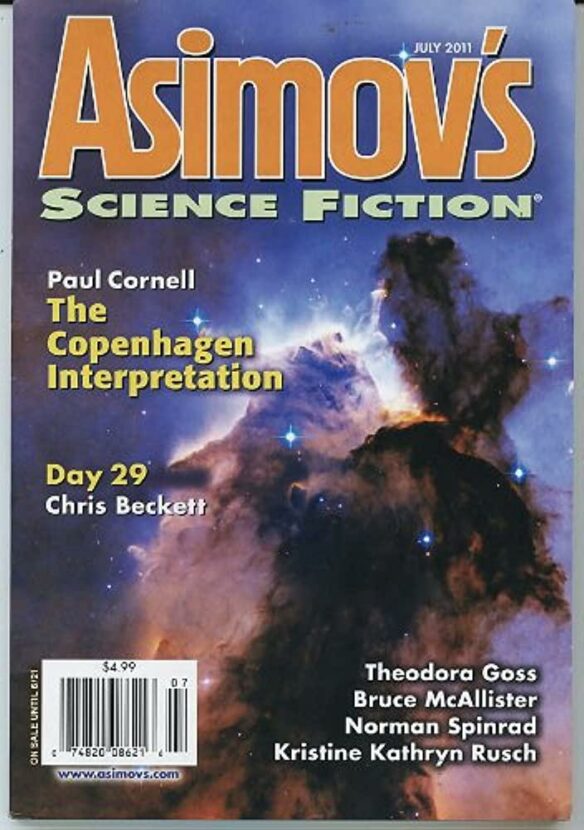
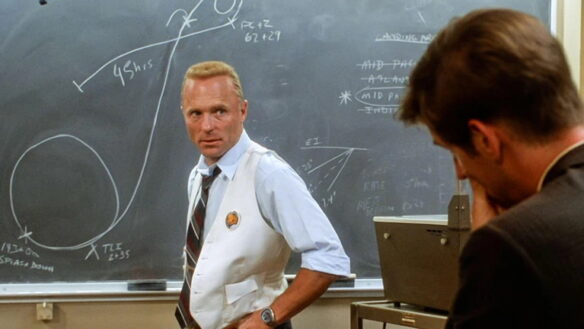

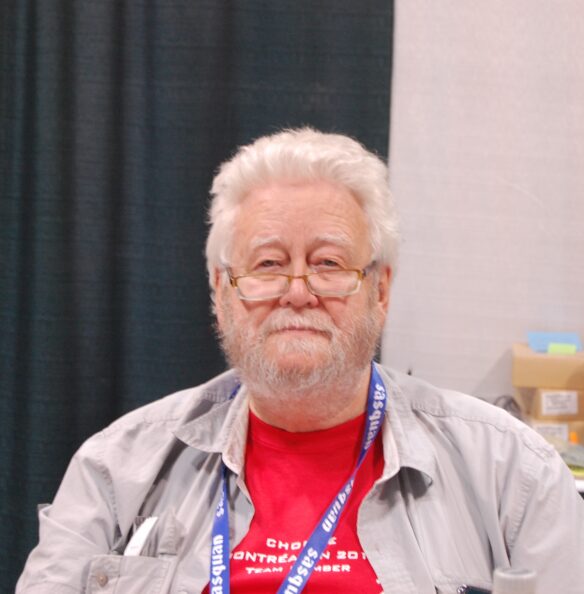
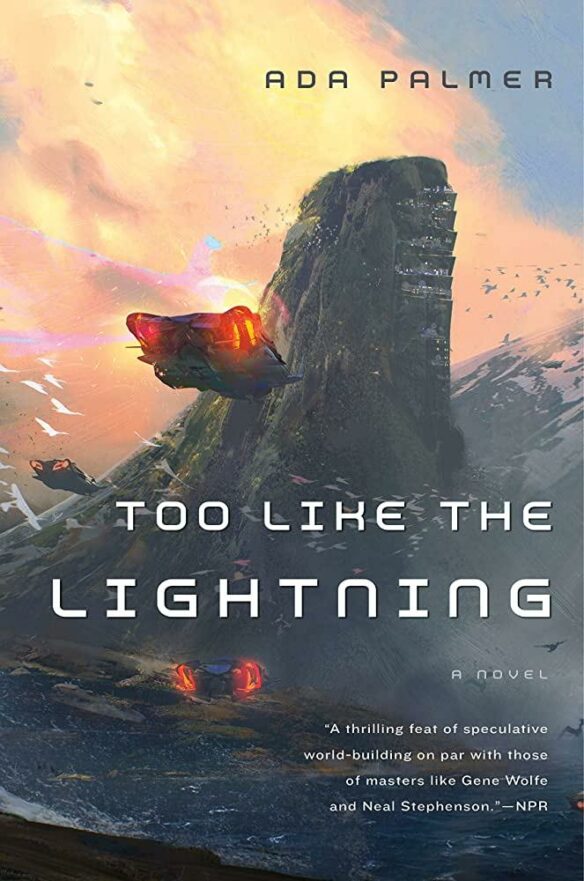
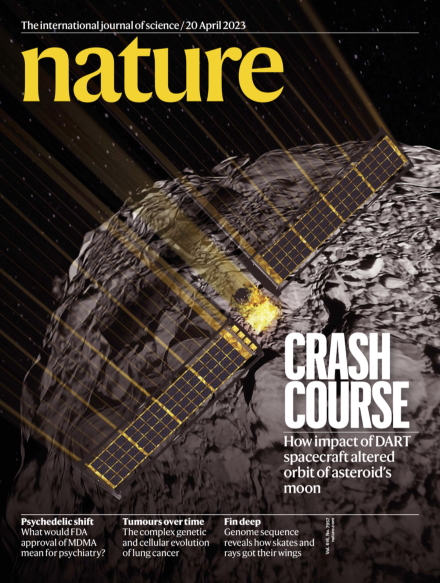

 John Mansfield copied me on the Canadian Booksellers Association News for June 3 containing the shortlist for the
John Mansfield copied me on the Canadian Booksellers Association News for June 3 containing the shortlist for the